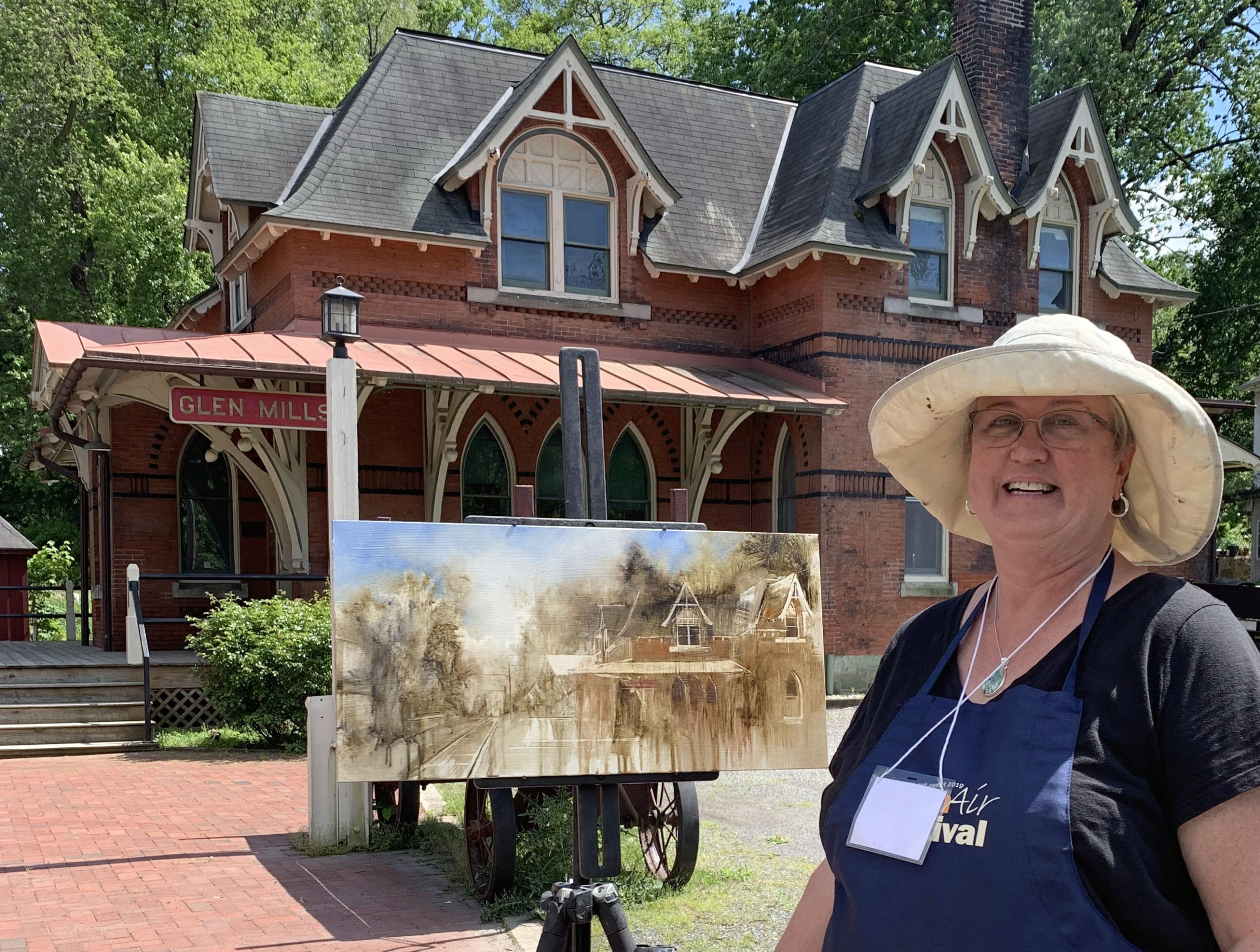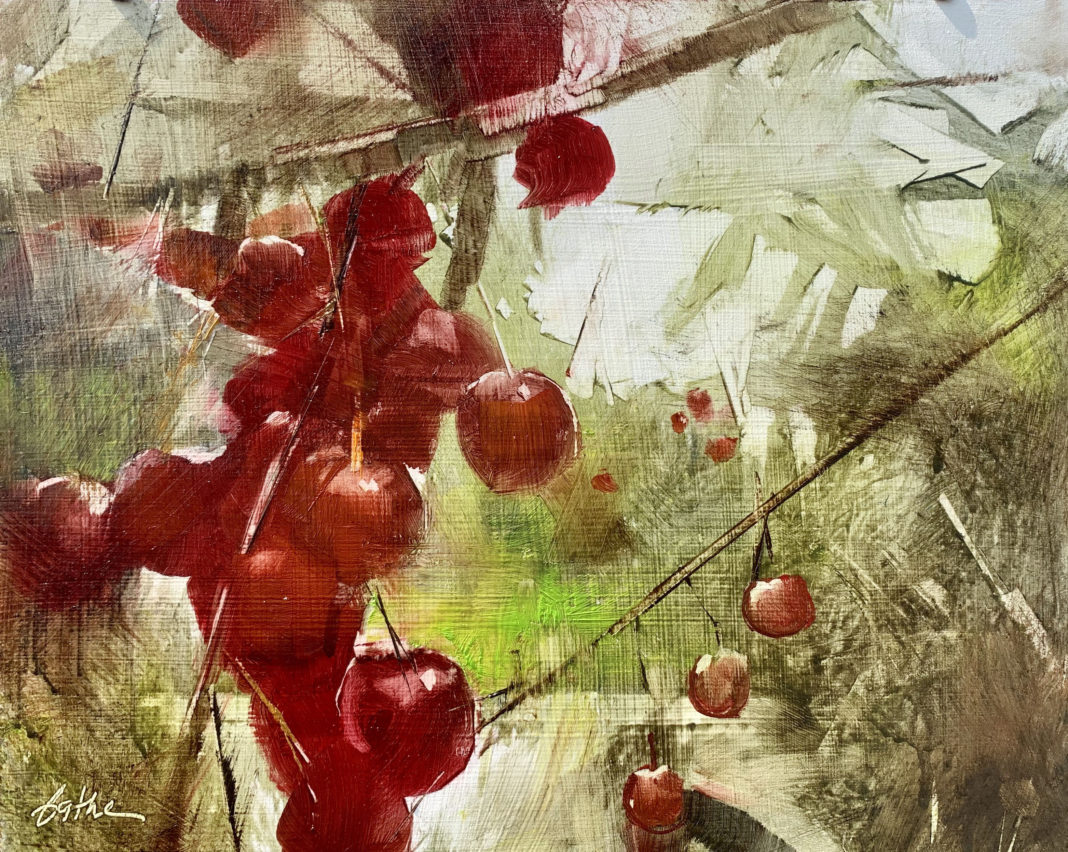Plein air painter Beth Bathe answers five reader questions about how to use water-mixable oils.

Q: What product should I use to glaze with water-mixable oils?
~ Sally Pym, Venice, FL
Water-mixable mediums have been developed for water-mixable oils — quick dry mediums, stand oils, painting mediums, impasto mediums, linseed oils, alkyd mediums, and glazing mediums.
Water-mixable oils can also be mixed with any traditional oil, and if you use it in a 2:1 ratio — two parts water-mixable and one part traditional oil — the paint will maintain its water-mixability.
Q: Oils can be used in winter, but what about water-mixable oils? Are there temperatures at which using them is a challenge?
~ Ken Shipman, via Facebook
Yes, painting in temperatures close to freezing can be challenging when using water as a medium, especially in the early, thin wash stages. The water on your palette can actually freeze and resemble slush or acquire a gritty feel. The water-mixable paints themselves have no water in them, so the paint directly out of the tube will not freeze. I have been told that some painters put a bit of alcohol in their water to prevent it from freezing. Water-mixable paints will also not work as well in the rain. Although it can create some interesting textural effects, it can also wash away your painting.
Q: How does the working time of water-mixable oils compare with that of traditional oils?
~ Greysun Conroy, via Facebook
Depending on how thick you paint, water-mixable oils retain their elasticity and workability for up to 48 hours. Like traditional oils, water-mixables must dry through oxidation — the absorption of oxygen through the air. Once dry, they are just like any other oil painting and should be treated as such. Like traditional oils, water-mixable oil paintings cannot be reactivated with water when dry.
Q: Can water-mixable oils be used over an oil painting that has dried for over a year? If so, what is the process?
~ Linda Nicholls, Hunter, NY
I use Cobra paints, which do allow you to paint over an older painting that has dried; you just won’t be able to use water as a solvent. Instead, use one of the Cobra mediums to give it a “wake up” — the technical term is oiling out. Begin by removing all the dust and grime with a damp cloth and allow the paint-ing to dry completely. Then apply a thin coat of oil medium and allow it stand for at least a day (choose a location where it’s not going to gather dust). At that point, you should be set to begin painting again.
Q: Is it safe, archivally speaking, to put a palette of water-mixable oils in the freezer in between painting sessions to keep them workable so they do not dry out and I don’t waste paint?
~ Julie Hunt, Alberta, Canada
Yes, I have found that my water-mixable oils can be put in the freezer for storage. There is no water in the paint, only pigment, linseed oil, and the emulsifier.
Discover more articles on this topic at OutdoorPainter.com.
Visit EricRhoads.com to find out all the amazing opportunities for artists through Streamline Publishing, including:
– Online art conferences such as Plein Air Live
– New video workshops for artists
– Incredible art retreats
– Educational and fun art conventions, and much more.
> Subscribe to Plein Air Today, a free newsletter for artists
> Subscribe to PleinAir Magazine so you never miss an issue






Thanks for this article on water-miscible oils. I was wondering whether or not they would be suitable to use in cold weather plein air painting, and also storing in the freezer when not in use.